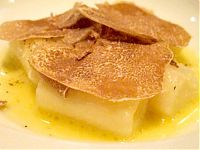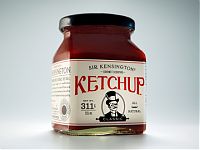Tight Little Island: Islay Scotch
by Mort Hochstein
March 29, 2007
I’ve made several trips to Scotland and Ireland in an earnest attempt to better understand the great whiskeys of the world. My first visit many years ago was notable for a near miss. I came to the end of a long day of researching without having sampled my reason for being there.
It was an odd trip, on my own by puddle jumper flight from Edinburgh to Aberdeen where I was picked up by a PR maiden from Glenlivet. We spent a day on twisting, narrow roads, visiting the great old brick and vine-laden facilities, talking to distillers, visiting malting rooms, knocking on barrels, gaping at the stills and leaning over the well that embraces the fabled spring that gives off the magic water that is the basis for the brand. We also visited a woolen mill where I purchased a couple of cashmere sweaters.
As our day ended, we headed off to the small airport at Aberdeen. While waiting for my plane in the small airport pub, I caught sight of a dark smoky room full of contented locals sipping Scotch. I realized with a sodden shock that I had not tasted a dram in all our arduous schlepping around the Highlands. So I decided to reverse roles and treated my hostess to a taste of the rival brand, Macallan, which she seemed to have enjoyed. How I ever spent a whole day in the home of malt Scotch without sampling a drop is beyond me. But I was younger then and still green in the arts of my trade.
It wouldn’t happen today, but I also hardly need to go over the seas to keep up on Scotch. Distillers now tour the States frequently in an effort to educate and seduce us poor scribes into flogging their wares. Most recently, I was privileged to enjoy a tasting of the Bowmore line, which comes from Islay, an island off Scotland. Whisky from the islands and coastal regions reflect the wind and the sea and usually exude a strong iodine flavor. I have difficulty getting past that briny, medicinal flavor, although there are many who enjoy it. Briny works only with oysters, for me.
Somehow, the folks at Bowmore have been able to bring in a smooth malt with a peat taste that embodies the region’s basic characteristics while toning down the iodine taste of the sea. As Scotland’s second-oldest distillers, in business since 1779, they should know how. All sorts of flavors run through the full-bodied Bowmore line, gliding from honey to heather and lemon to tropical fruit and sherry, reflecting the Spanish sherry and American bourbon casks in which they mature.
While there are modern influences in the packaging and in the flavors, Bowmore, the most complex of Islay whiskies, stays close to its origins in production practices. As many winemakers have done, Bowmore has cleared away some of the clutter and excess verbiage on its label, retaining the arced Bowmore logo on a sleek, more contemporary, clear bottle which better shows the color of the whisky. Gold accents have been replaced by copper, a reference to the stills in which the precious fluid is distilled.The plant may be ultra modern in equipment, but it somehow retains that back-country distillery feel we associate with Scotch malts. Scotland has more than ninety single malt distilleries, but Bowmore and only four others, according to Fergus Hartley, a Bowmore director, malt their own barley manually in the traditional, labor-intensive manner. Turning the germinating malt by hand on stone-floored malt barns is expensive and producers send the barley to factories specializing in that process. Bowmore does 40% hand malted, and 60% processed elsewhere. The firm has also introduced more sherry casks alongside its traditional bourbon barrels, which seems aimed at satisfying the American thirst for a sweeter drink.
Barley soaks for up to four days in huge tanks of water and is then spread out on the floor of the malting house to germinate, enabling the starch in the grain to be converted to the sugars needed in whisky production. In most plants, the grains are turned over mechanically, but Bowmore holds to the old ways, with workers raking the grain — a backbreaking routine — on the old stone floor of the distillery. When germination has reached the desired level, it is halted by drying the barley in a kiln fired with peat. Each distillery allows the peat smoke to filter through the drying barley for varied times, contributing to the individual style of the drink.
Like Glenlivet with its fabled spring, Bowmore proclaims its extra edge is water from the Laggan (la-gen) River, which originates in pre-Cambrian rock and picks up flavor as it travels through peat. It is, say the Bowmorieans, completely different from the water used in the heavy, pungent whiskies made by others on Islay. The whisky matures in Spanish and American oak casks in damp cellars, known as vaults, below sea level.
In New York, we tasted through bottlings ranging in age from 12 to 25 years in age, as well as a 16-year-old limited edition, and a 17-year-old designed for duty-free stores. The duty-free people like to convey an image of exclusivity, so the whiskeys for those outlets are tweaked to be slightly different, or so they say. The treat of the afternoon was a 37-year-old, carrying a precious price tag of more than $1200 dollars, if you are lucky enough to find one of the 700 bottles produced. Here are my notes: (All prices are approximate and may vary).
Legend, $25: Eight years old, light gold color, easy drinking, marine and sweet citrus flavors, smoky finish, a good introductory whisky.
12-year-old, $45: Soft, pear and light iodine tones with an aftertaste of dark chocolate aged in both sherry and bourbon casks.
15-year-old, $65: Reddish, copper color, nose is soft with hints of toffee, apples and chocolate, cedar wood and sweet fruits on the palate and a lengthy, memorable, sherry-rich finish.
1990, 16-year-old Limited Edition, , $85: Somehow there is barely a hint of its shoreline origins, instead hibernation in sherry casks has mellowed and toffeed the drink, leaving only a slight edge. Only 250 bottles for the U.S. and most are bespoke.
17-year-old, duty free, $84: It will be in the retail shops for most of this year, until it can be replaced by the 18-year-old, It’s an exotic brew with deep fruit and chocolate tones, slight smokiness, but well modulated by time in sherry casks.
18-year-old, $85: My personal favorite. It’ll be available later this year, go for it. This one has the familiar peat and smoke richness, tempered by aromas of raisins, toffee and chocolate. It grew up in a mixture of bourbon and sherry casks, yielding a palate of soft fruit and chocolate and a long, slightly sweet finish.
25-year-old, $275: The US, got 840 bottles out of the 3600 produced, largest allocation among Scotch-thirsty nations. Sherry and stone fruits, toffee, hazelnut, an explosion of flavors.
1968, 37-year-old Limited Edition: In numbered bottles and beautifully packed in a black wooden box with magnetic closure. For well-heeled collectors only, $1,200 dollars, probably more if you can find one of the 700 bottles that were produced. Matured in bourbon barrels, soft and mellow on the nose, candied fruit on the palate, a long memorable finish.
About the only fault I can find with this remarkable tasting is that it was conducted in the U.S. Next year, folks, let’s do it on native ground. We’re Bowmore bound.




















